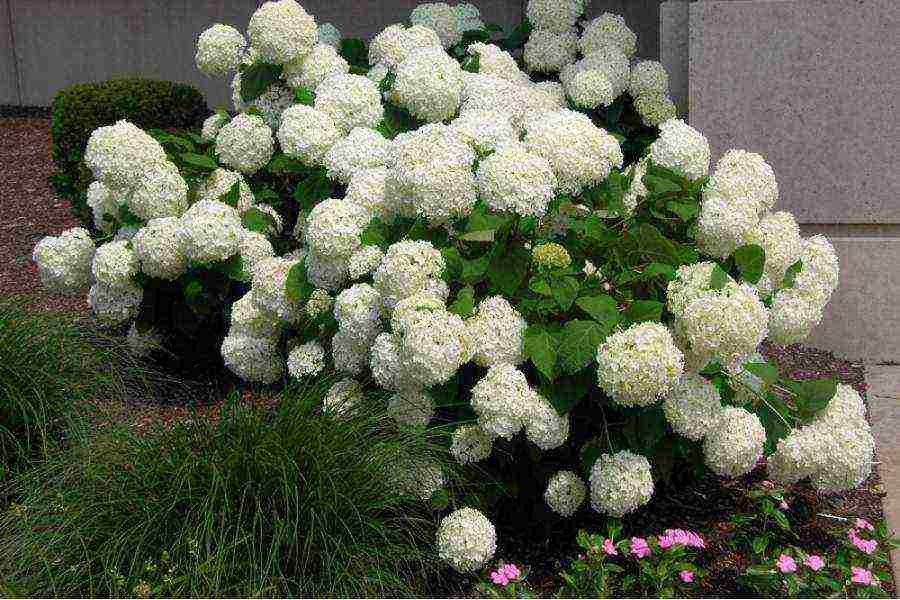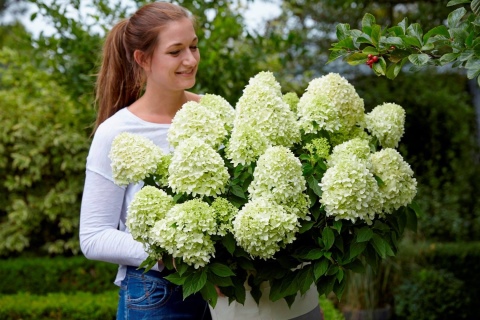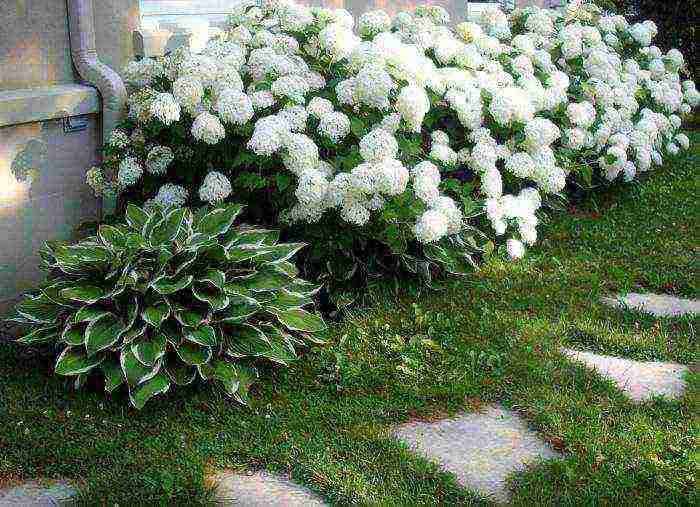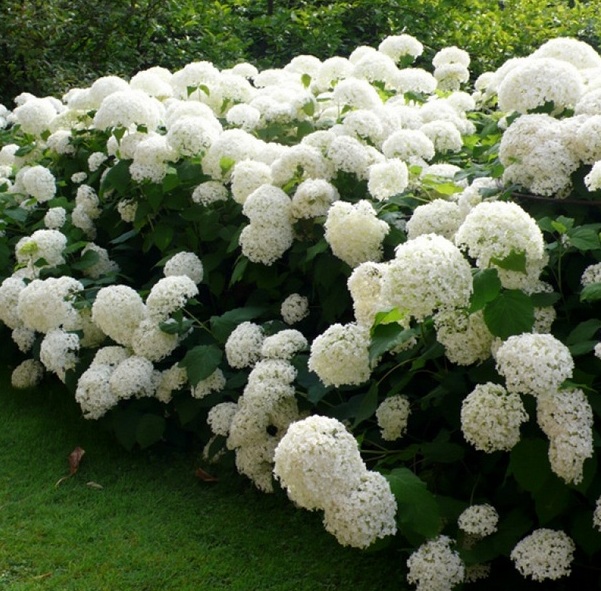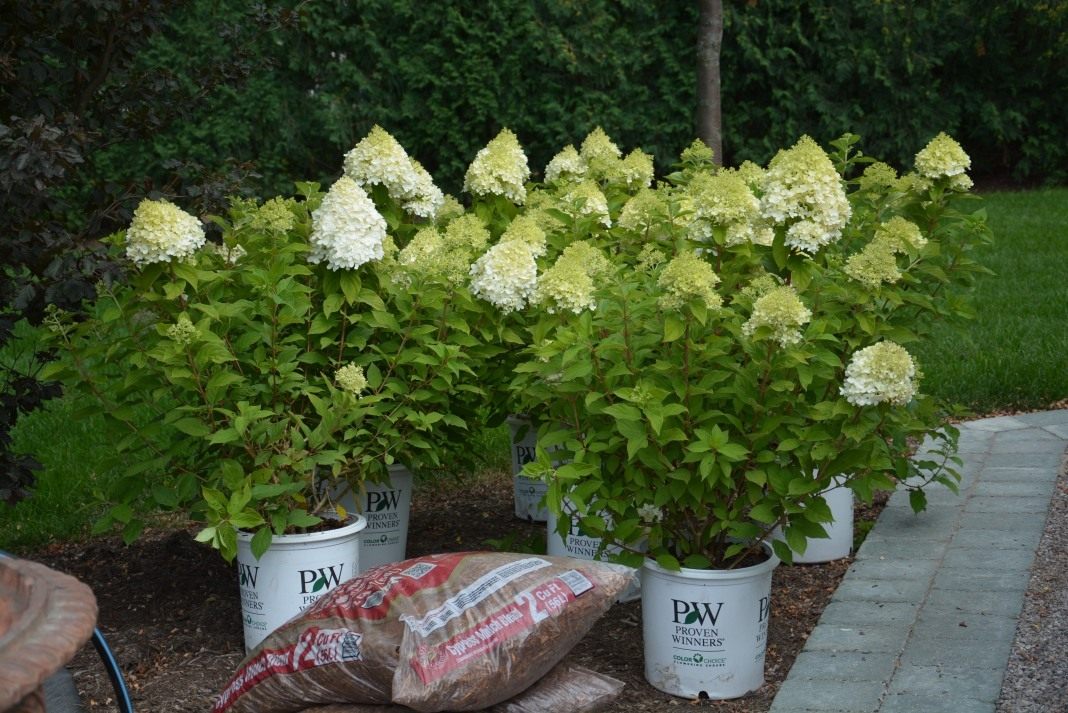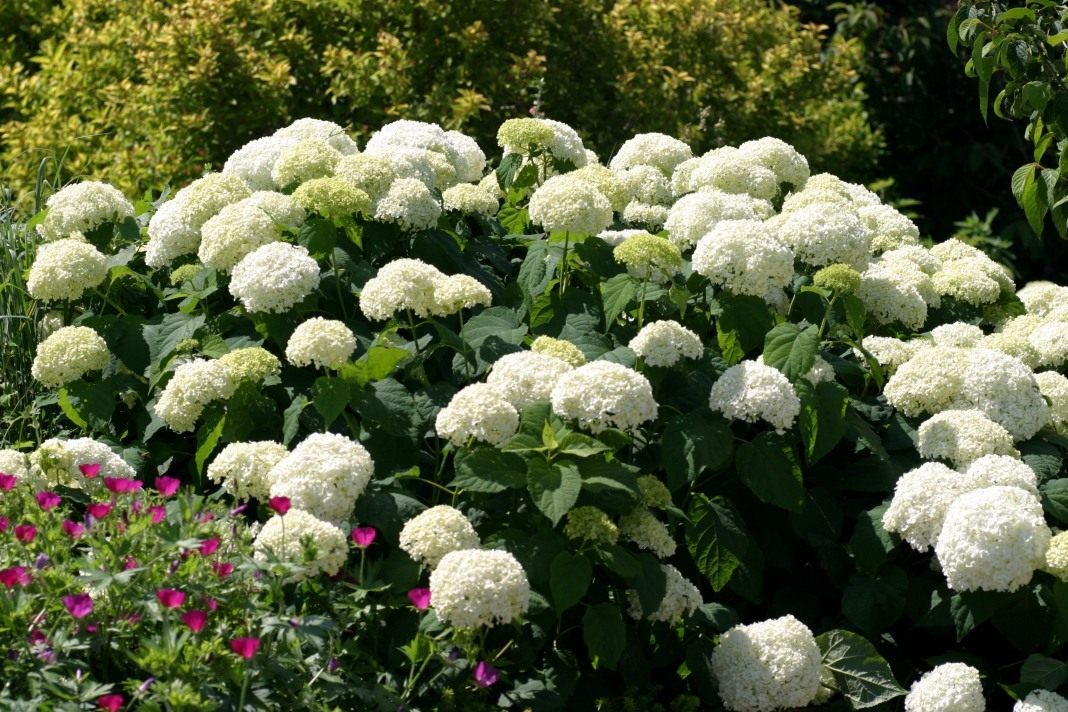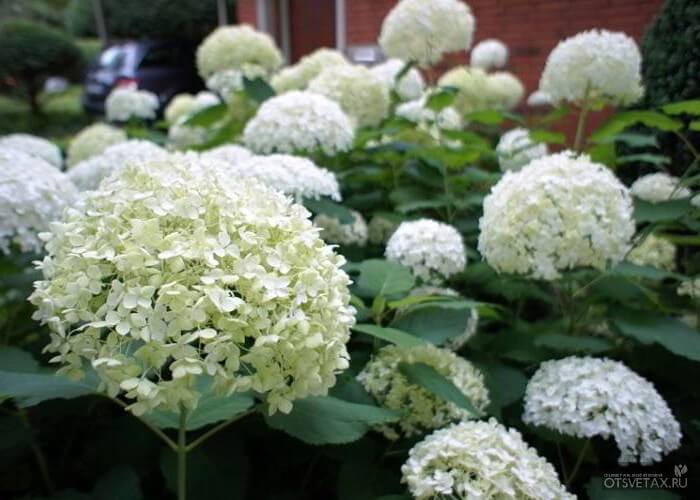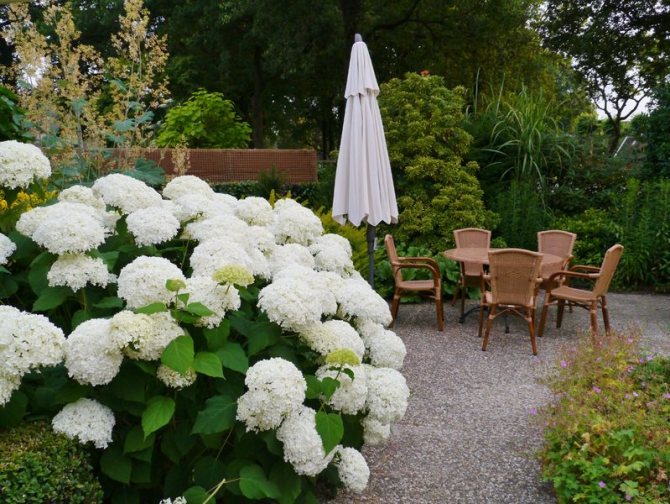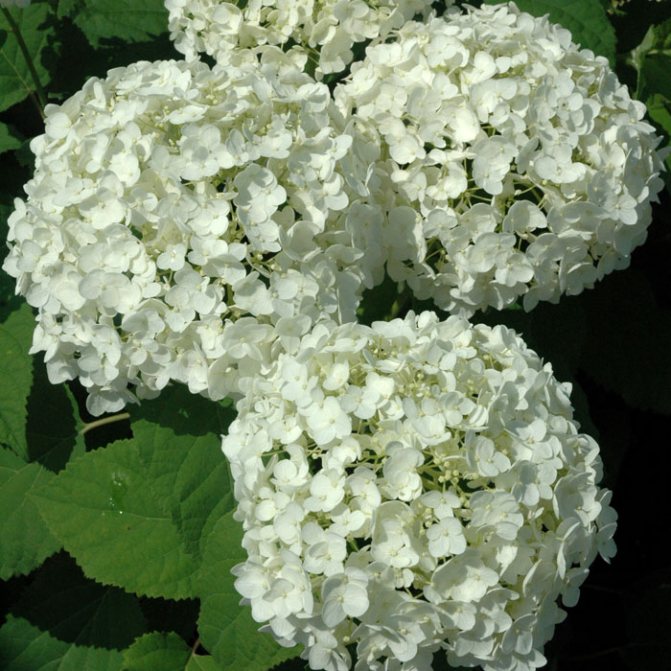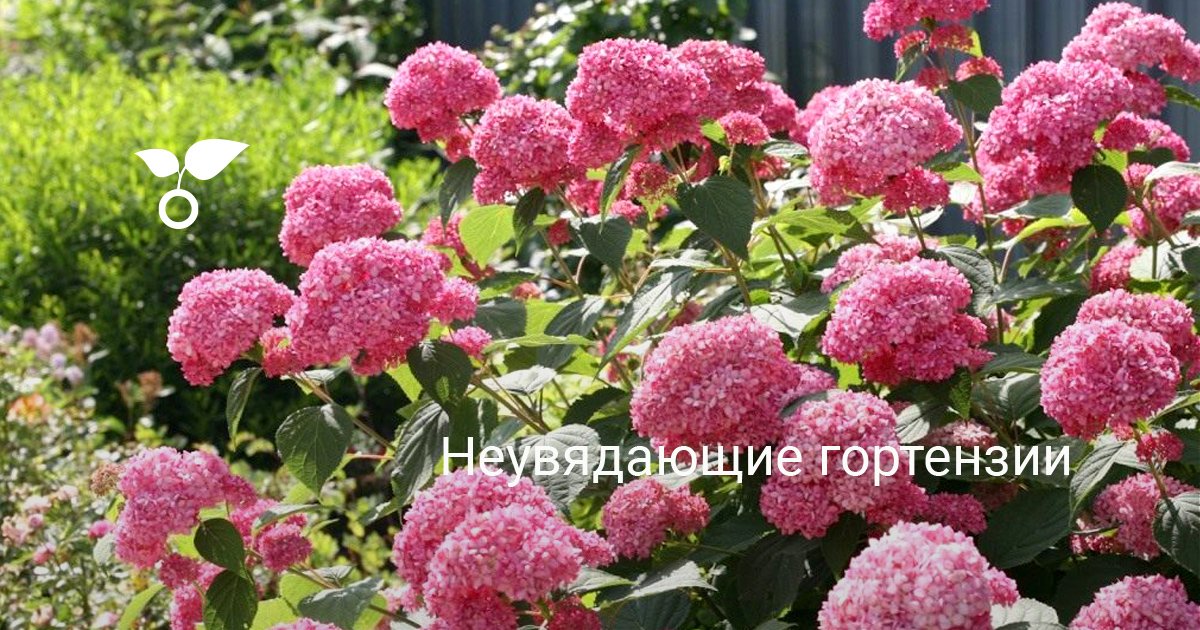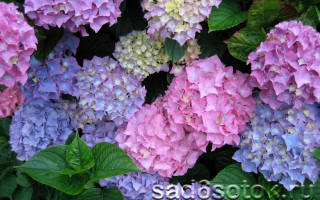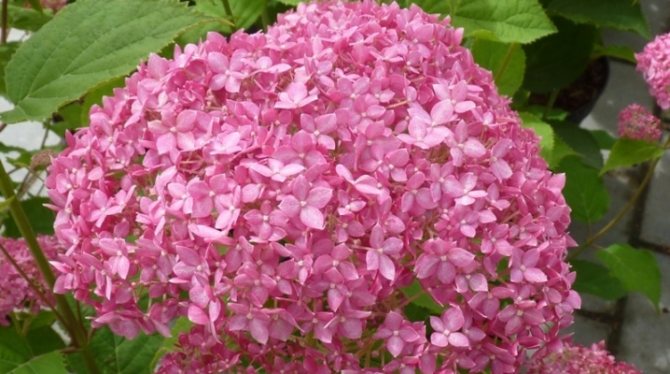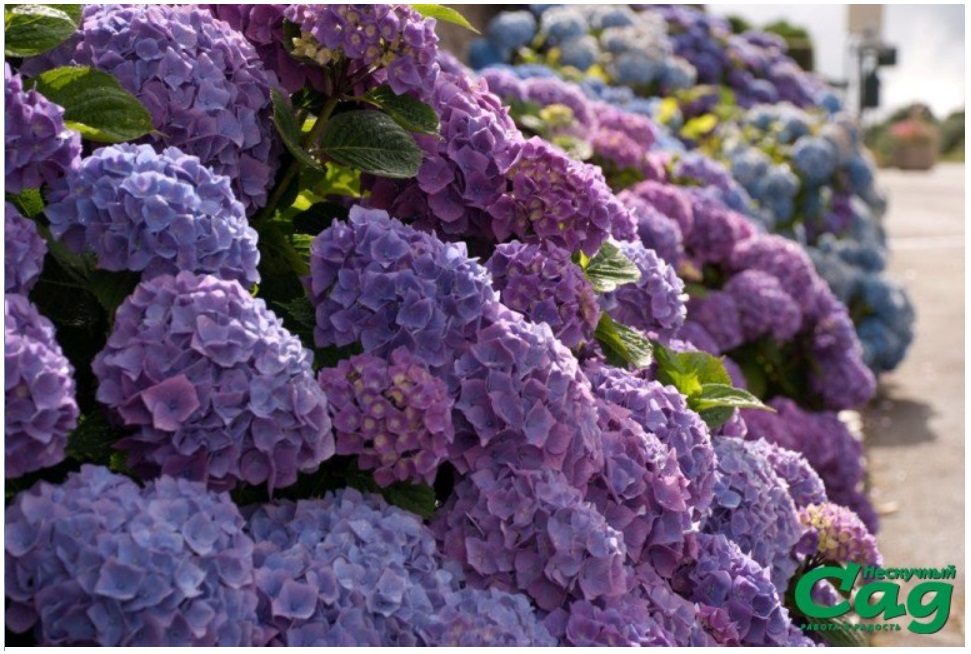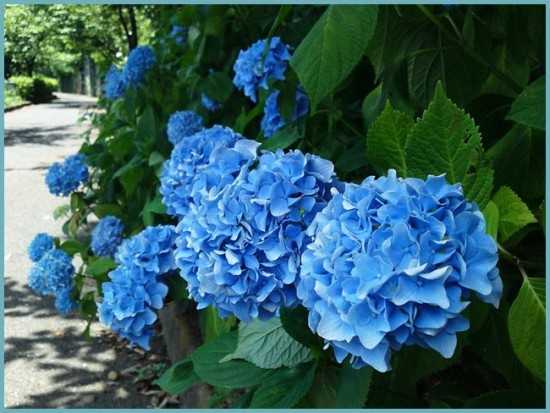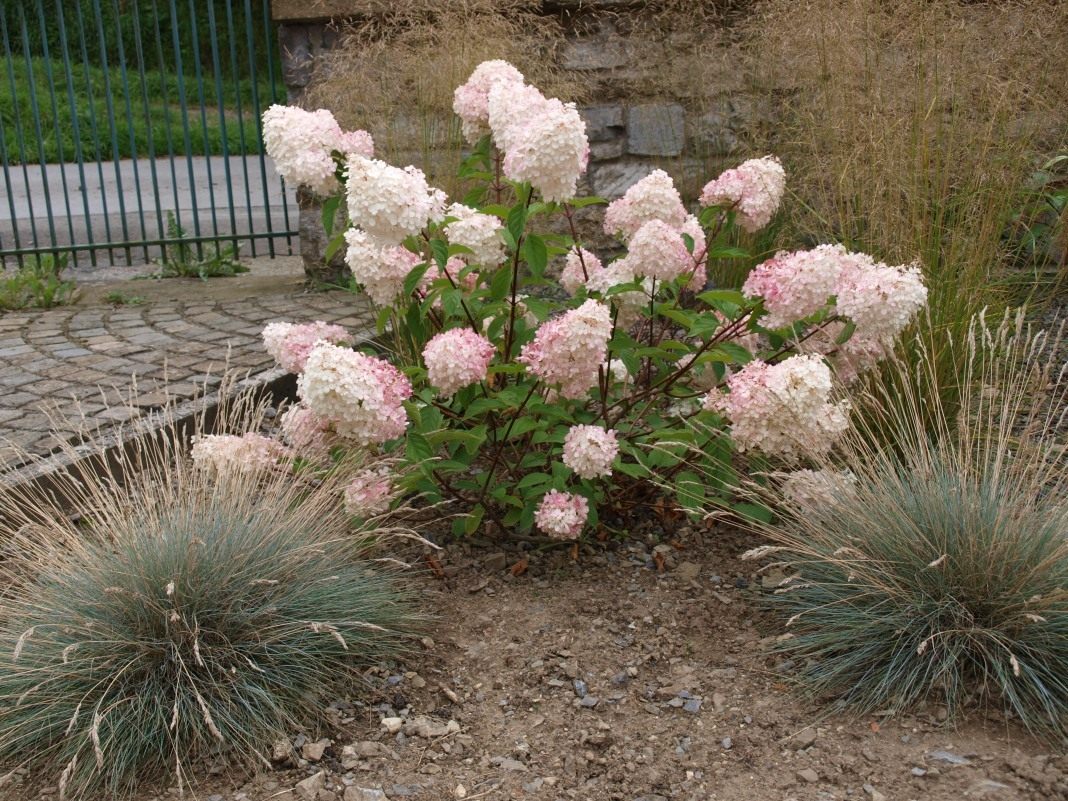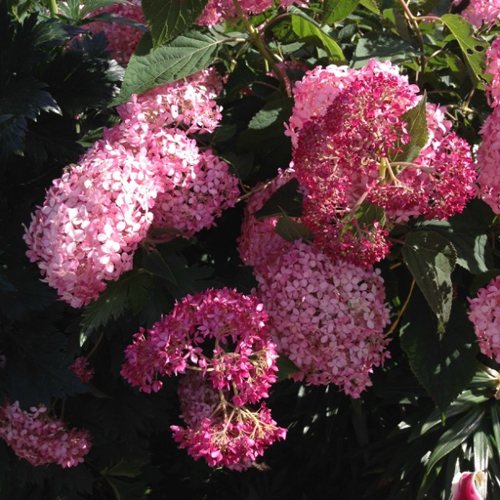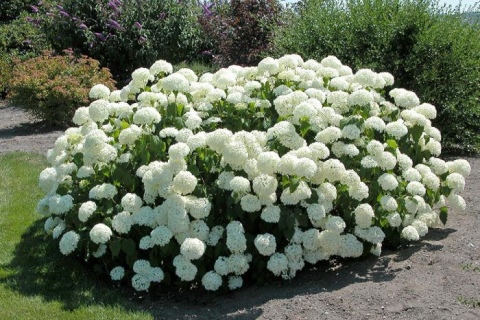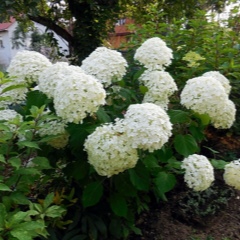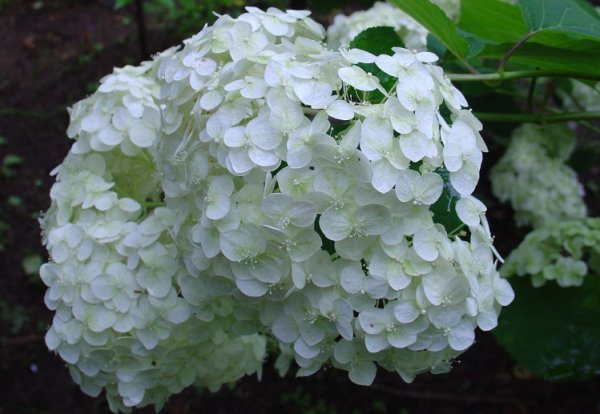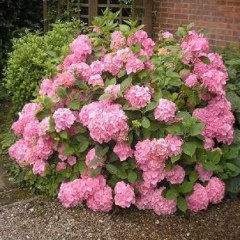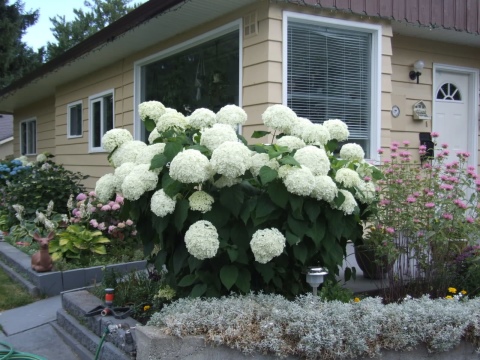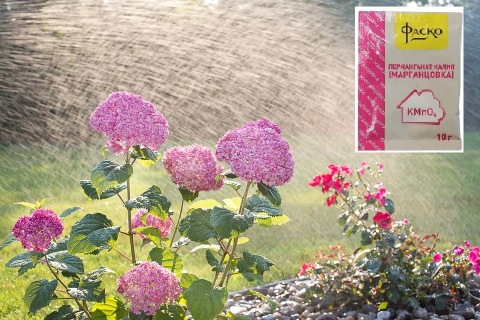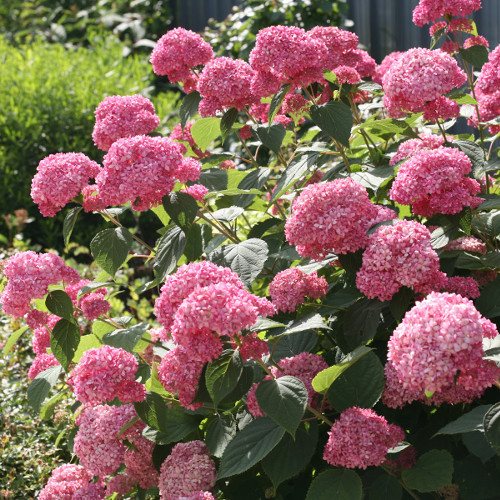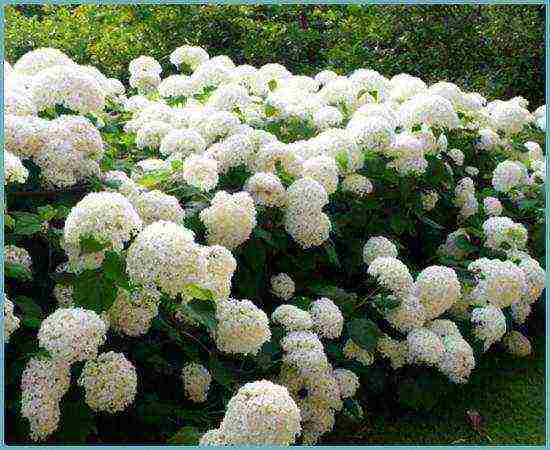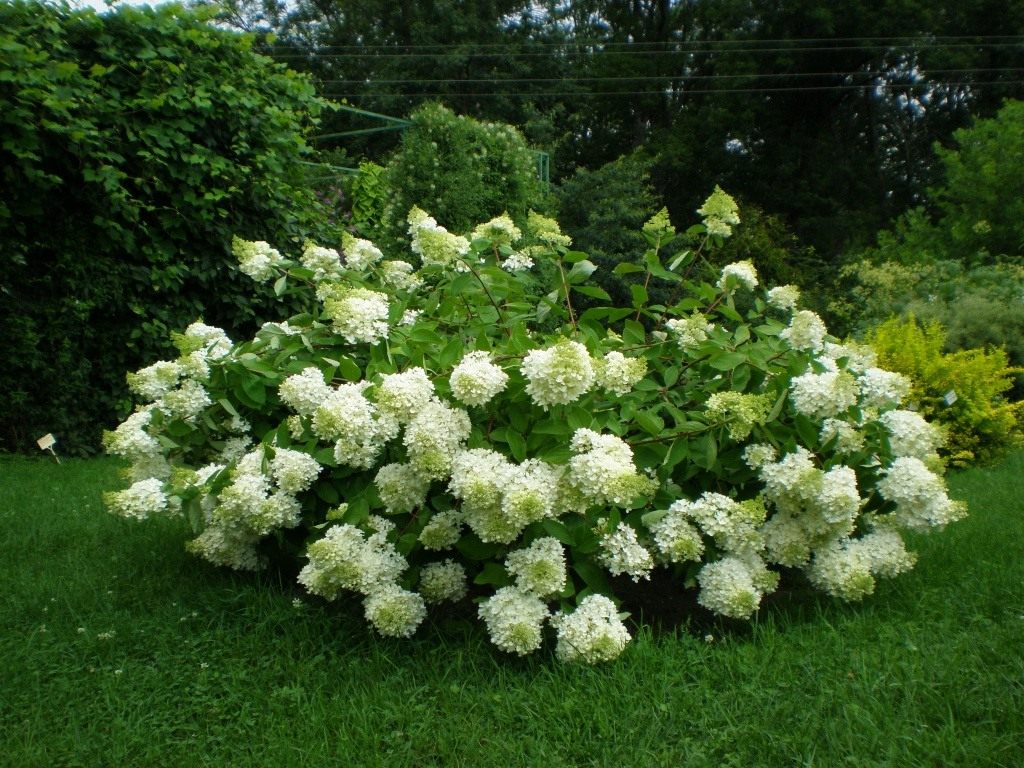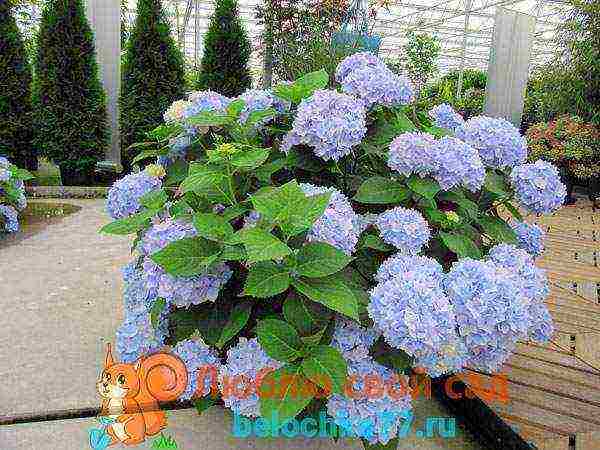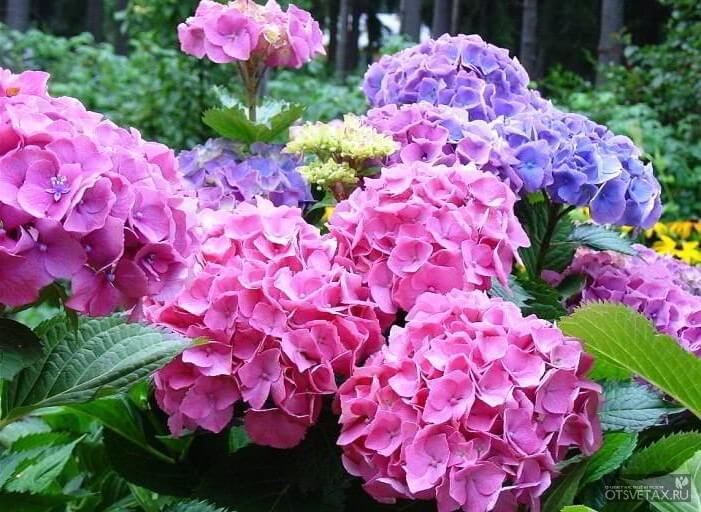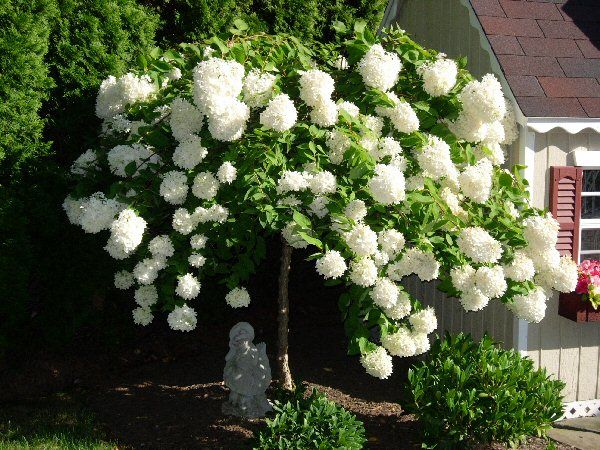Description of hydrangea Annabelle with photo
The unpretentious and disease-resistant plant is large in size, which must be taken into account when planting. The height of the bush is about 90-150 cm, and the width of an adult bush is 120-180 cm.
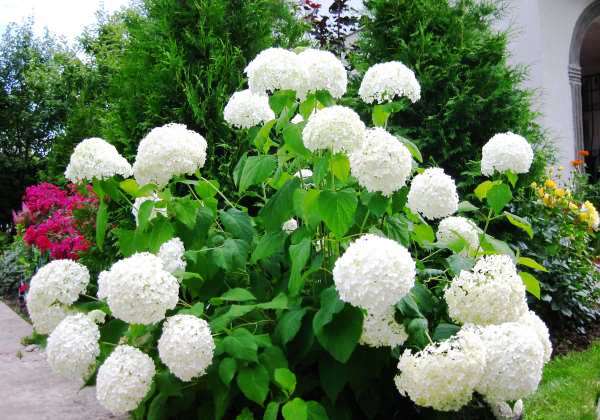
At the end of June, this deciduous shrub produces large, globular inflorescences, up to 30 cm in size. At the beginning of the opening of the buds, the flowers are lemon green, then they turn snow white, only to regain a pale green color at the end of summer.
The duration of flowering is about two months, during which the shade-tolerant beauty is able to visually brighten the shady corners of the garden.
Treelike hydrangea can be grown in full sun, but the hotter the climate, the more the shrub needs shade.
Hydrangea Pink Annabelle
Created by American breeder Thomas Runney. Hardy, very easy to grow compact, hemispherical shrub, suitable for any garden with annual flowering regardless of weather conditions. Its height is only 1.2 meters.

Pink annabelle
This pink form of the popular snow white Annabelle has become a hit in ornamental gardening. It is characterized by the same large inflorescences that form on strong shoots.
The bushes bloom profusely until the end of August. Later they slowly dry up, but do not fade, retaining their filigree structure and decorativeness until snowfalls.
Hydrangea Ruby Annabelle
It is a dense, rounded shrub with erect stems and dark pink, almost red inflorescences that bloom from late June to early autumn. At the end of summer, the color of the flowers becomes creamy green.

Ruby annabelle
Hydrangea Sweet Annabelle
Another new variety from this series with very large inflorescences. In this medium-sized cultivar, the flower color changes dramatically over the season. When closed, the petals in the buds have a rich crimson hue. The opening buds show a light pink color.

Sweet annabelle
During the summer, the color becomes even paler, and, eventually, as the flowers fade, the petals in the inflorescence take on a greenish color. "Sweet Annabelle" is unpretentious and is an excellent plant for a novice gardener.
Hydrangea tree Strong Annabelle
Also known as Incrediball. The newly introduced variety has gorgeous, huge white flowers that adorn the plant for a long period - from June to September.
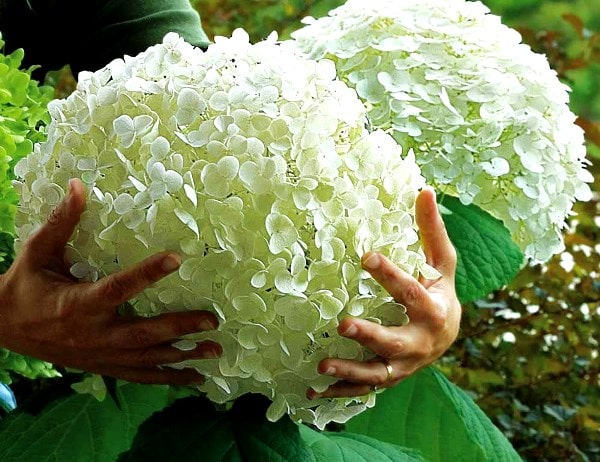
Strong annabelle
The variety was bred with very strong shoots that support such large flowers and do not sag under their weight. Bloom from June to September. The height of the bush is 150-200 cm.
Varietal characteristics
The homeland of this beautiful flower is America. There, in Ohio, in the 18th century, breeders managed to breed the tree hydrangea. The flower began to be in great demand among gardeners, thanks to which, after a few years, Pink Annabelle seedlings were brought to many European countries. This variety is also found in eastern countries - Japan, Korea and China.
The tree-like pink hydrangea has the following description: this plant belongs to tall seedlings - the main stem of the flower reaches a height of 1.0 to 1.5 m. Annabelle bushes grow very quickly. With proper care, the flower dome can grow up to 3 m in diameter, so hydrangea bushes should be planted in the garden at certain intervals.
With the arrival of spring, the plant is covered with large shiny leaves. They have a neat oval shape and reach a length of 18-20 cm. The foliage of the seedlings casts a rich green hue, which remains until the first frost appears. In autumn, the leaves of the Pink Anabel bushes begin to turn yellow and gradually fall off.
The tree-like pink hydrangea stands out from other varieties with the unique shade of its inflorescences. After the onset of stable warm weather, the seedlings bloom in large buds (25-30 cm). They acquire a bright pink hue only after they have fully bloomed.The large stem holds the heavy flowers securely, preventing the plant from bowing to the ground.

The size of the inflorescences depends on how often the gardener carries out the formation of the bushes. Keep in mind that with strong pruning of Pink hydrangea, large buds will grow on the bushes, but there will not be very many of them. Annabelle blooms in early summer. The buds continue to form on the plant until the end of November.
Due to its bright colors, hydrangea bushes look very elegant and unusual. Pink Annabelle is suitable both for complementing garden groups already growing on the garden plot, and for single breeding. Often landscape designers use this variety as a decorative hedge, zoning individual areas of the garden.
Despite the fact that pink hydrangea looks sophisticated in the beds, the flower is able to withstand sub-zero temperatures and is not susceptible to infectious diseases.
Even without regular feeding, Anabelle bushes do not stop blooming. This flower is a long-liver. Hydrangea Pink can grow in one place for 45-50 years.
Giving a description of the tree hydrangea, gardeners emphasize one amazing feature of this variety. Annabelle inflorescences easily change their colors depending on the composition of the soil in which the seedlings grow. It is not uncommon for a white hydrangea to turn blue under the influence of a high aluminum content in the soil.
Hydrangea white - diseases and pests
Hydrangea has good immunity, however, when planting a crop in the wrong soil, insect pests may appear on the site. If the hydrangea is sick with chlorosis, then this indicates an excess of lime in the soil. Therefore, you should spray the foliage with copper sulfate. Sometimes this culture is sick with powdery mildew. This is due to the fact that the surrounding air is very humid, therefore, the plants must also be sprayed with copper sulfate, and in order for the preparations to better adhere to the surface of the foliage, they should be treated with a solution of soap. Sometimes green aphids settle on the leaves of the hydrangea. These pests do not like garlic, so this plant can help you fight these harmful insects. The foliage is sprayed with garlic tincture daily for a week, after which the pests usually leave the site.
Review overview
Russian gardeners speak with admiration of Vanilla Freise.
First of all, they note its spectacular appearance: beautiful fragrant buds of an unusual color, which bloom during flowering and delight the eyes of not only the owners themselves, but also the guests of the summer cottage. Summer residents talk about its unpretentiousness, that this hydrangea variety is easy to grow and maintain.
There is also an emphasis on the good climatic adaptability of "Vanilla Freis", and on the fact that it adapts to almost any weather conditions and easily tolerates even severe frosts (from which, nevertheless, it needs to be protected).
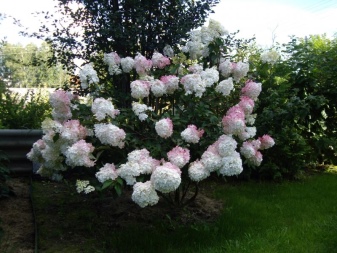
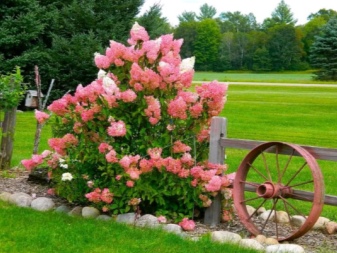
Some gardeners share their bad experience of growing this hydrangea variety. Due to the choice of an unsuitable (usually too sunny place) "Vanilla Freise" gave small flowers. However, after transplanting the bush to a shady area, the size of the buds and the duration of their flowering increased.
As you can see, the magnificent "Vanilla Freise" easily wins the hearts of gardeners. But she does not at all correspond to the image of a capricious beauty and does not require increased attention to herself. After spending a small amount of time caring for her, you will receive a flower that will become a decoration and pride of your summer cottage!
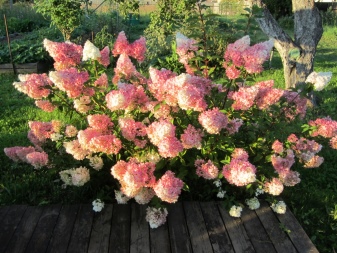
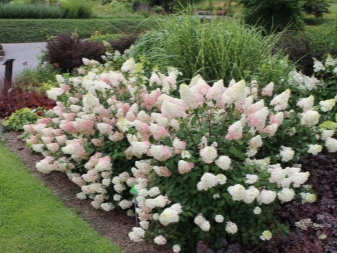
For information on how to care for the Vanilla Fraise hydrangea, see the next video.
Possible breeding methods
To breed this plant, there is no need to purchase seedlings from the retail network. It is enough just to propagate the culture by taking material for planting from a neighbor in the country. The bush takes root very easily and there are no problems in its reproduction.
Breeding methods do not differ from standard ones:
- cuttings;
- rooting of cuttings;
- division of roots.
There is a certain risk when using the bush dividing method. Without certain skills, it is better not to carry out such a procedure. After all, the bush grows very much with age and there is a possibility of injuring the main part of the bush. From such interference, the plant may not recover and die.
Cutting is carried out according to the following algorithm:
- Cuttings are prepared from young stems, cutting off the tops by 10-15 centimeters. It is best to do this at the very beginning of spring, before the start of the active growing season.
- For germination, they are placed in a jar of water for 10-15 days, until roots are formed. Rooting can also be carried out in the ground.
- The room temperature is maintained at 20-25 degrees.
- The soil must be constantly moist.
- Rooted seedlings are grown for two years, and then only you can define them in a flower bed.
Growing a new bush with layering is even easier:
- In the spring, when buds begin to form, the lower strong branch is pressed against the soil.
- Attached with brackets in the center.
- Sprinkle the place of fixation with soil.
- The soil is kept moist.
- A year later, when a new seedling is formed, it is separated from the main plant and planted in a flower bed.

Care
Although the Pink Lady variety is not particularly whimsical, it still requires regular and careful maintenance. It is required to irrigate the shrub once a week, pouring about 20 liters of liquid under each shrub. When the summer is rainy, you can reduce the frequency of watering to once every two weeks. It is best to take rain and soft liquid. Loosening of the land located near the hydrangea is considered an equally important process.
This should be done very carefully, since the roots grow horizontally, and careless movement can injure them. The shovel deepens by no more than 5 centimeters, and the procedure itself is performed only a few times per season. Additional loosening is required if, after rain or heavy watering, the surface is covered with a crust. In addition, hydrangea is necessarily mulched.
Fertilization is carried out regularly, as the plant responds effectively to feeding. Immediately after planting, it makes sense to use slurry, part of which is diluted in ten parts of water. In addition, 10 grams of potassium nitrate, 10 grams of ammonium nitrate and 20 grams of superphosphate are diluted in a bucket of water. The next fertilization is carried out when the plant actively begins to develop. For hydrangea, it is worth preparing a mixture of 35 grams of potassium sulfate, 20 grams of urea and 30 grams of superphosphate, intended for a square meter of beds.
Further feeding will be required during the period of bud formation. In this case, 60 grams of superphosphate and 45 grams of potassium sulfate affect a square meter of plantings. Repeat feeding should be twice over the summer. In addition, after planting, it is recommended to water the hydrangea with a mixture of potassium permanganate and sour potassium in a very low concentration. Pruning a crop will only need sanitary to remove old or damaged shoots, and this should be done in the spring. In addition, each shoot is shortened so that six to eight buds remain until the juices begin to move.
Some nuances in care
It is necessary not only to find the right place for planting a bush and plant it according to all the rules. He needs care. Even if this plant is unpretentious, it still has some requirements.
Observing simple rules, you can achieve wonderful results, make composite flower beds, group plantings - there is no limit to imagination.
Knowledgeable gardeners, when growing hydrangeas, use some trick, thanks to which the caps of the inflorescences can be painted in a variety of shades.
For garden varieties, this effect is achieved by changing the acidity of the soil.For a tree hydrangea, this method is not suitable, but there is a possibility of obtaining a short-term effect. To do this, certain dyes are added to the water for irrigation.
For a greater effect, they even achieve several shades on one bush. A very original painting with magical transformations.

Wintering a bush is not a hassle, since even a drop in temperature to -40 is not terrible for a frost-resistant bush. Young growth suffers more often in frosts below - 20
Watering
Annabelle is very condescending to even the most frivolous gardeners. She will patiently wait for watering, waiting out even a dry summer. But for a moisture-loving hydrangea, watering is still periodically necessary so that the leaves do not begin to wither.
This is especially important for young plants - during the period of intensive growth, they must be watered abundantly.
Top dressing
Even if a careless gardener is not at all involved in the care and fertilization of a tree hydrangea, it will still bloom and grow well. True, the flowers will not be so lush and huge, and their size will be much more modest.
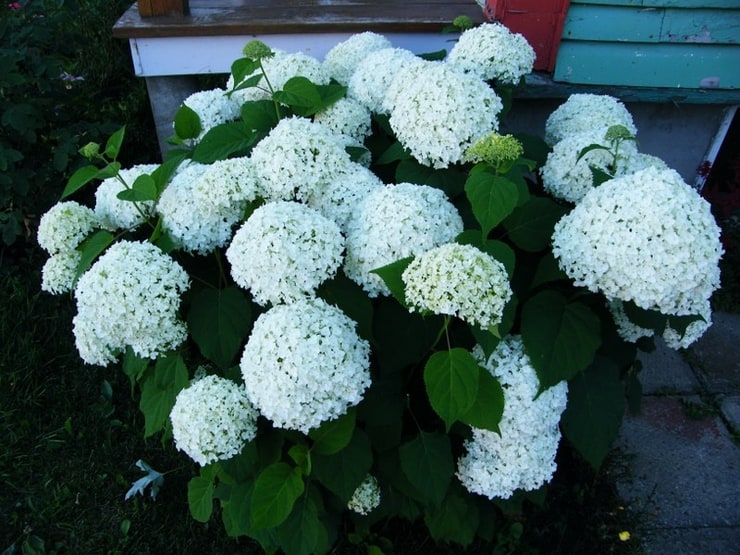
During the growing season, several dressings are carried out:
- The first, spring feeding is carried out before the beginning of the growing season, phosphorus, potassium and nitrogen fertilizer complexes are applied, which contribute to the better growth and development of the plant. After making, the trunk circle is mulched.
- The second dressing, consisting of phosphorus-potassium elements, is applied during the formation of buds
- In addition, the bush is sprayed twice with a weak pink solution of potassium permanganate. This activity helps to strengthen the stems. For hydrangeas, this is an important procedure, since the heavy caps of the inflorescences strongly pull the branches towards the ground. In this regard, some gardeners are trying to tie up the stems, but as a result, the bush loses much in decorativeness.

